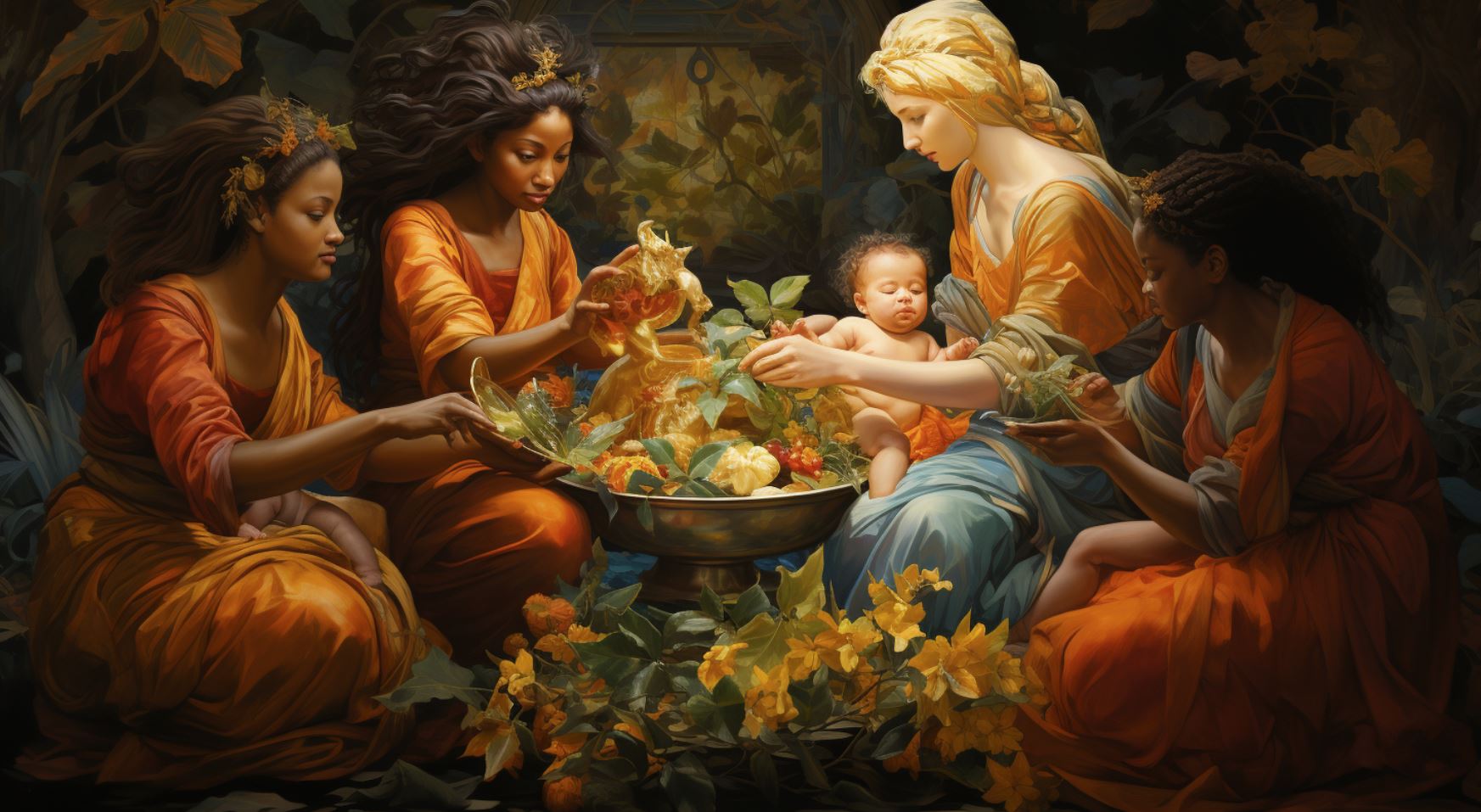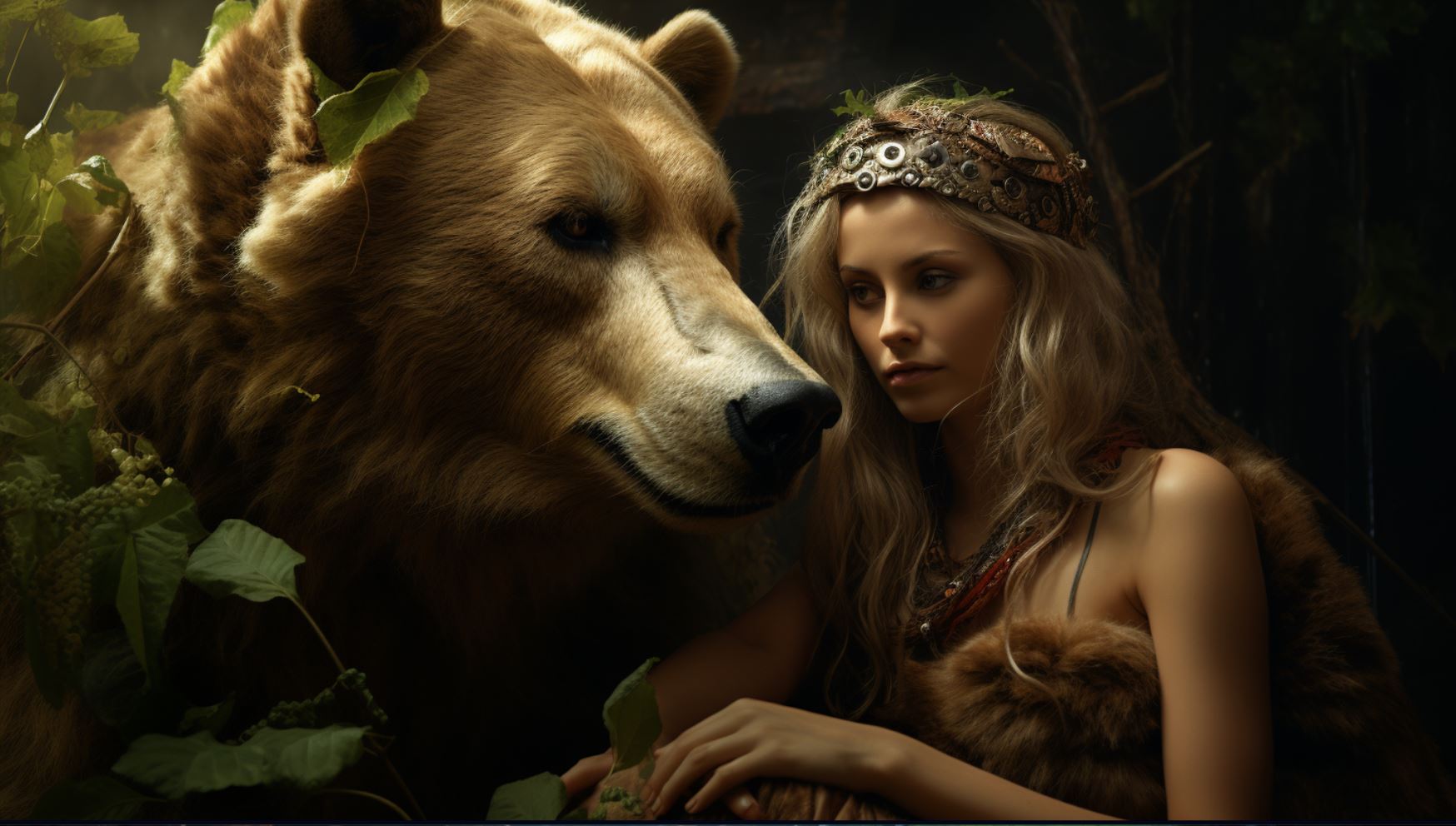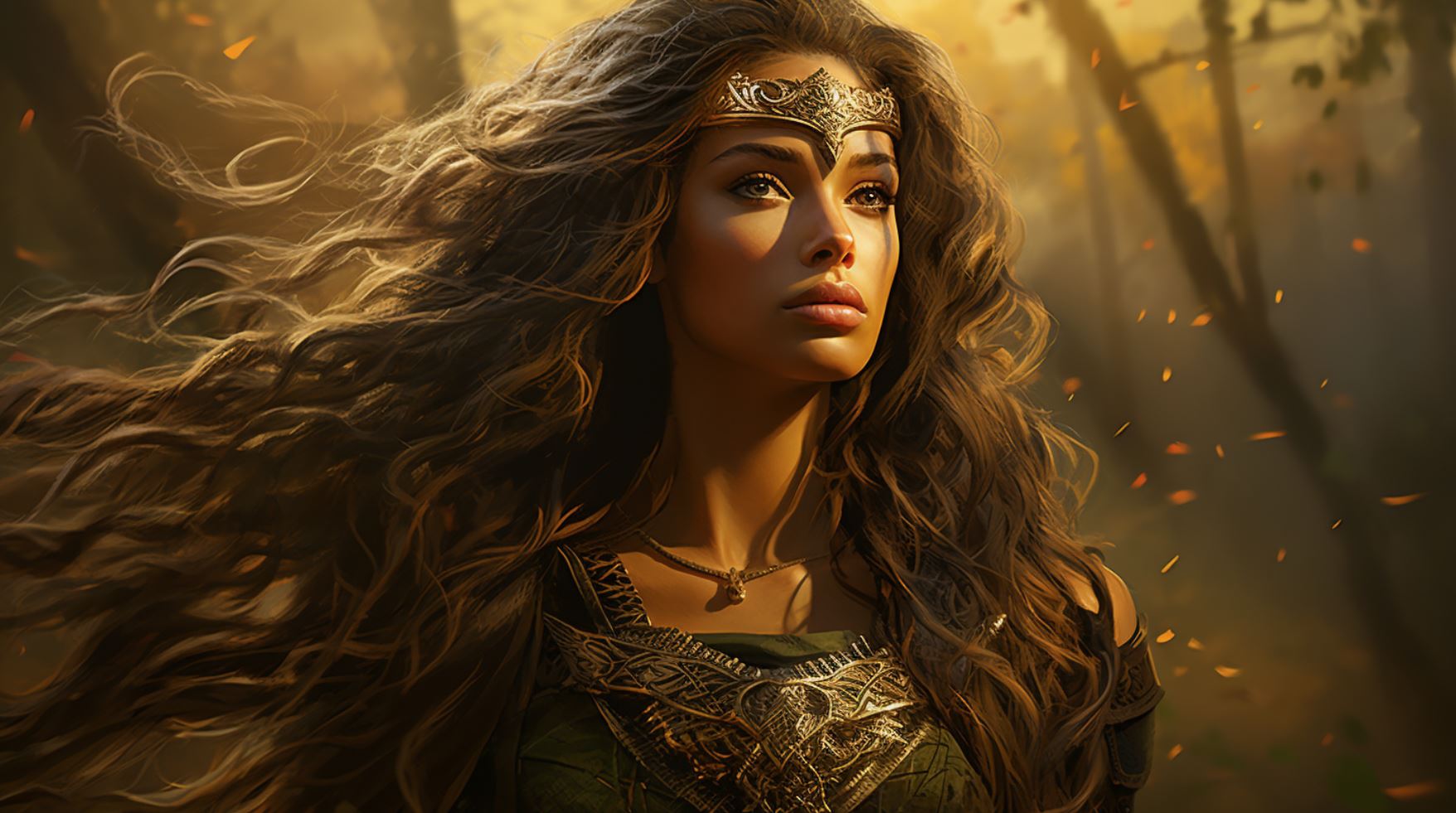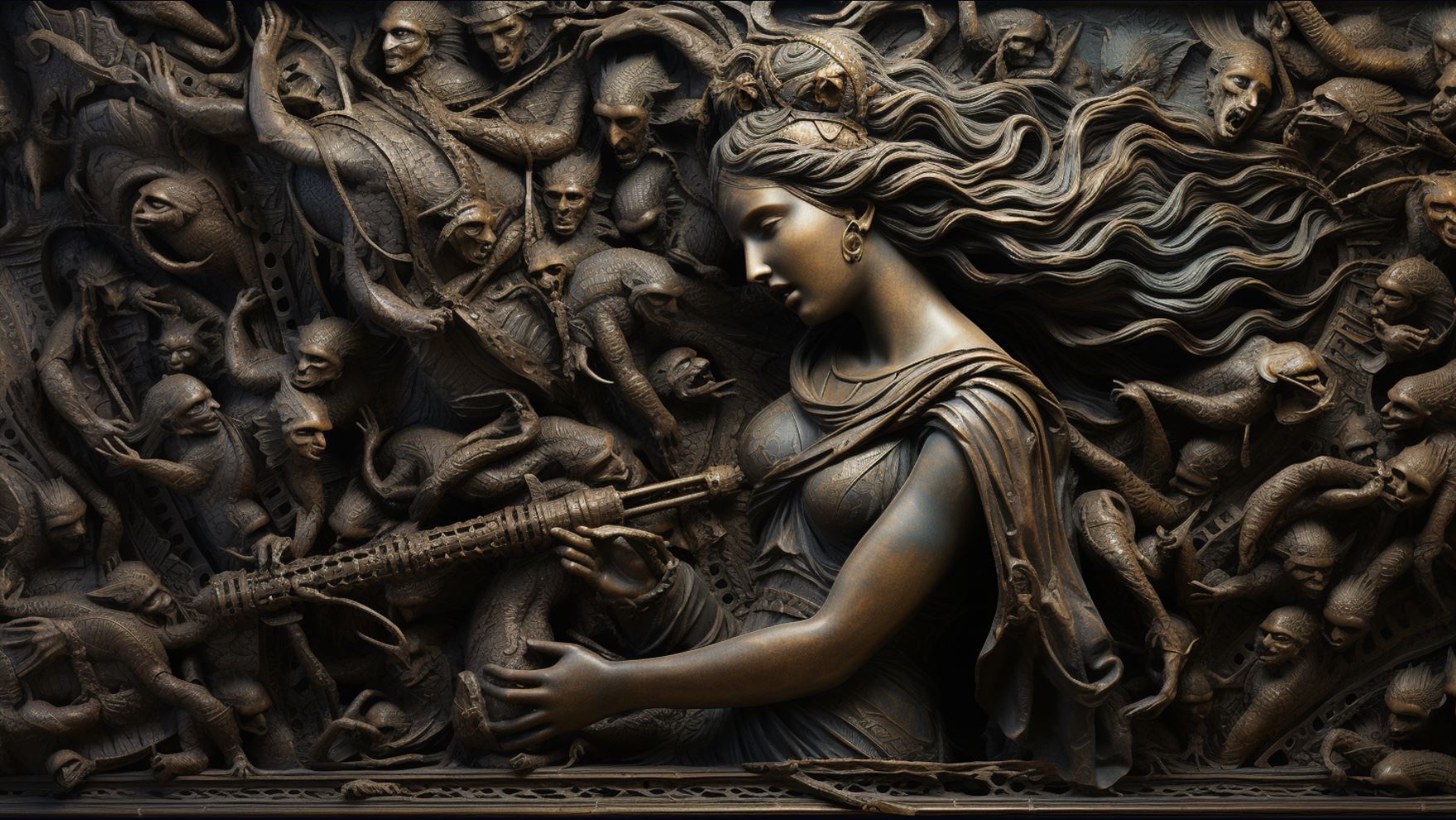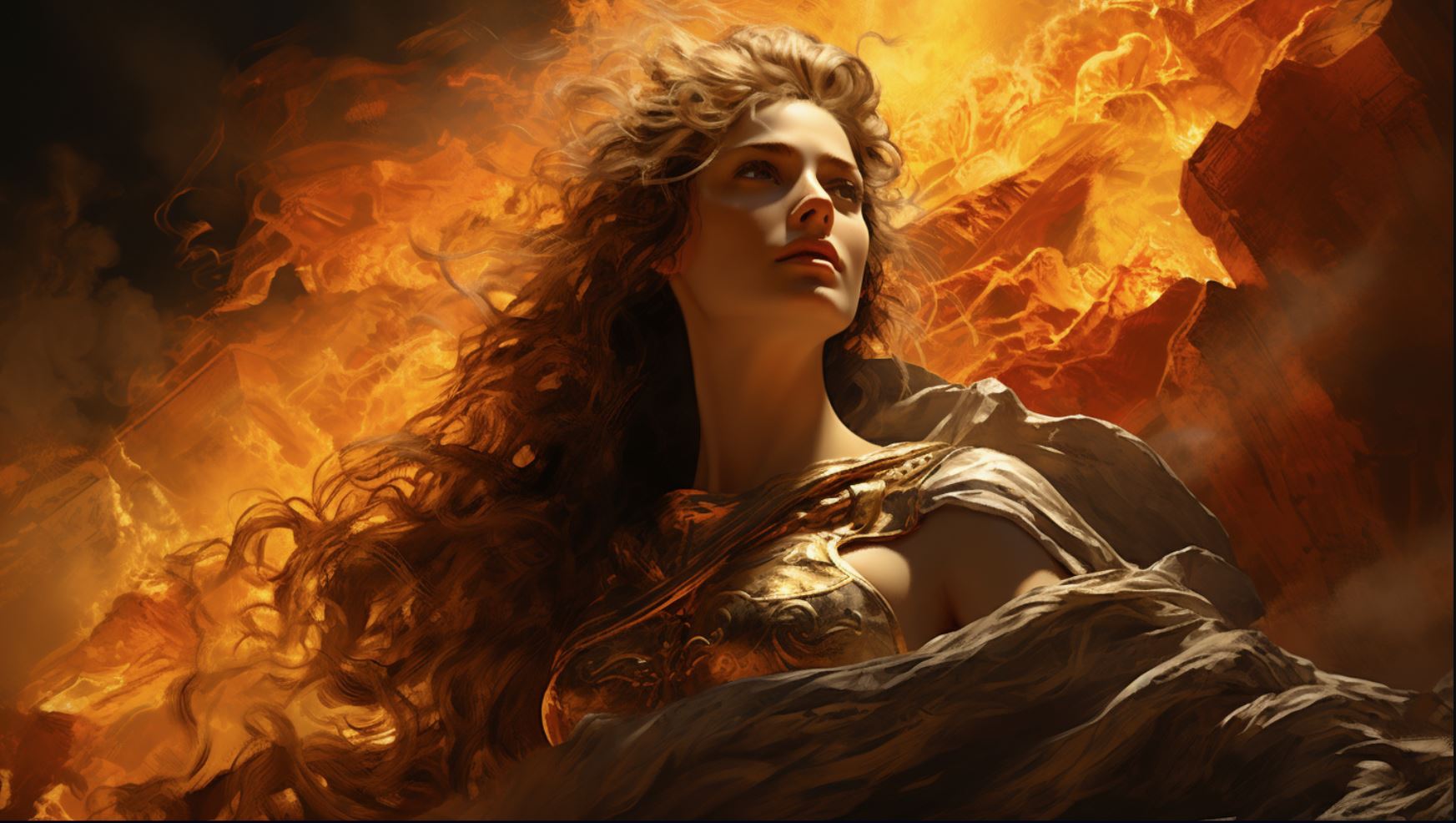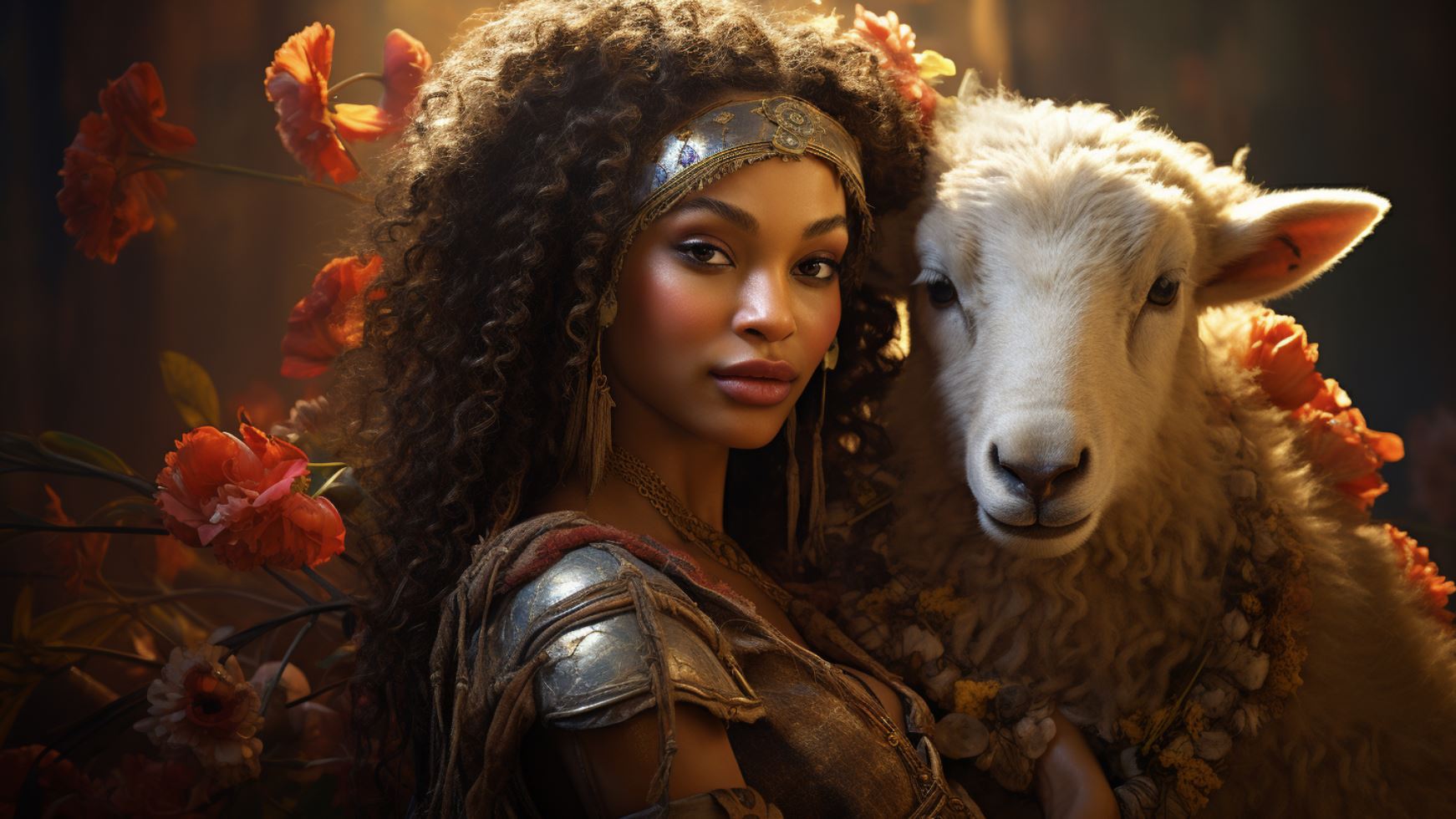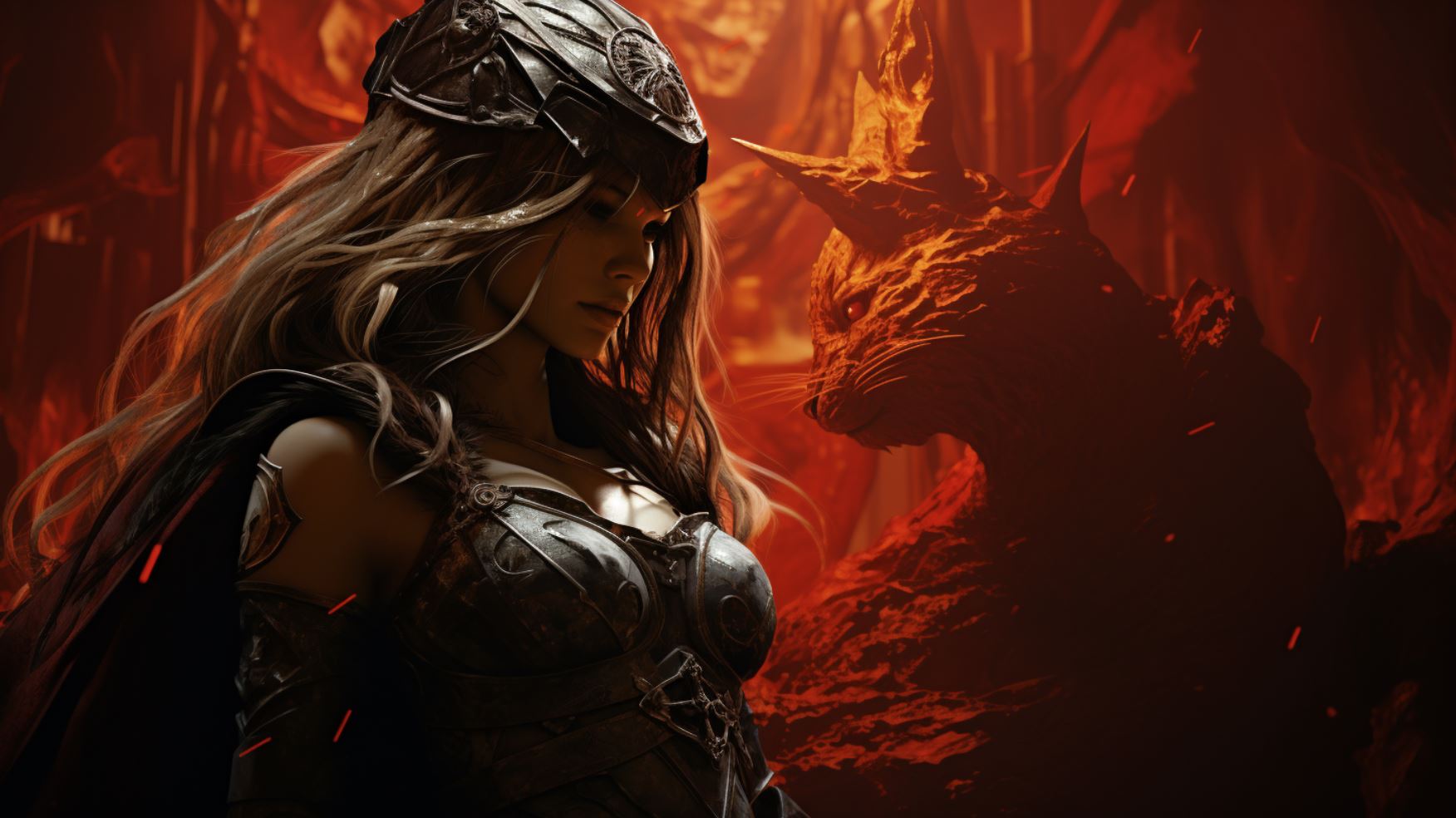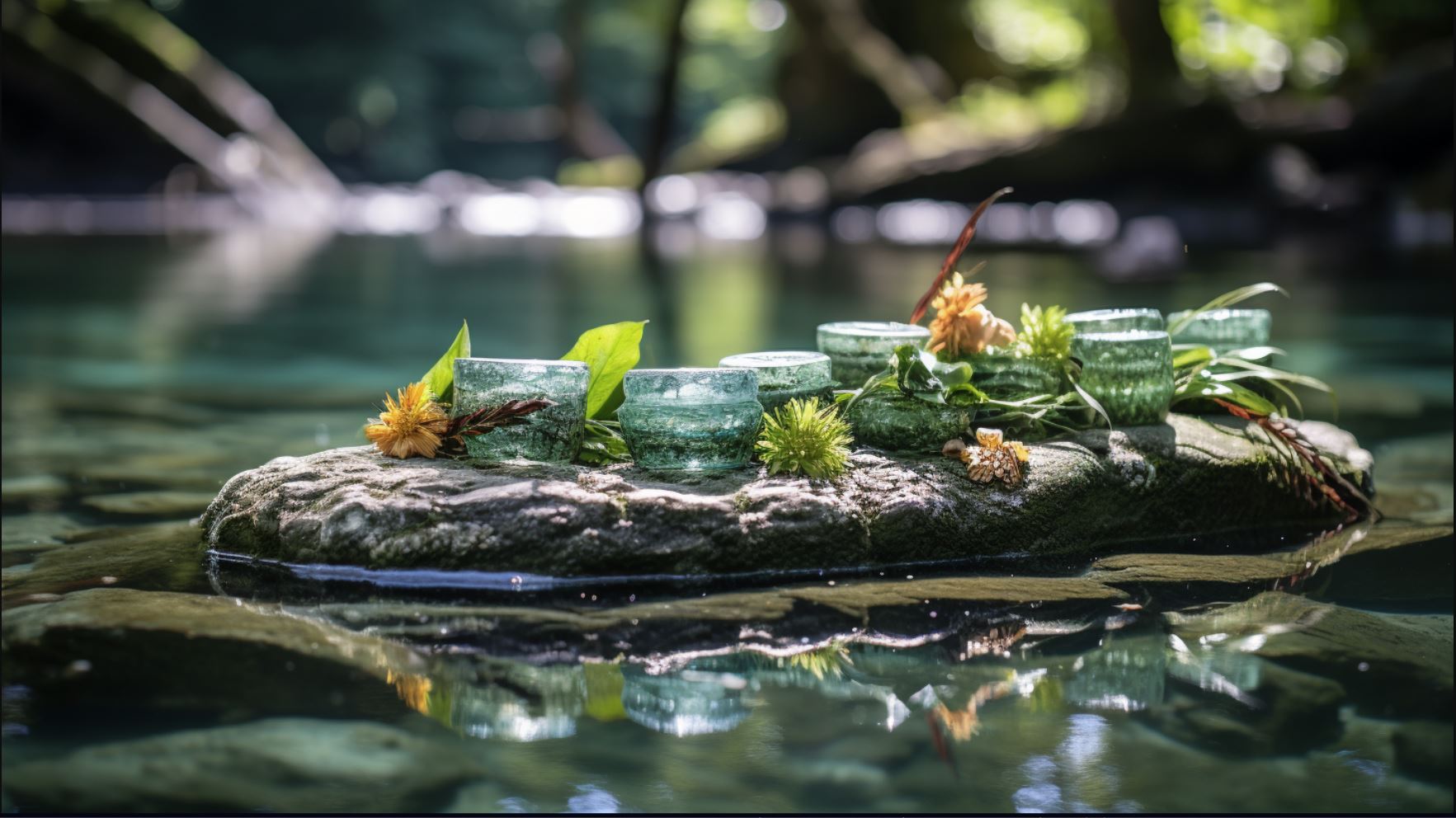Dea Matrona Goddess: Exploring the Celtic Great Mother
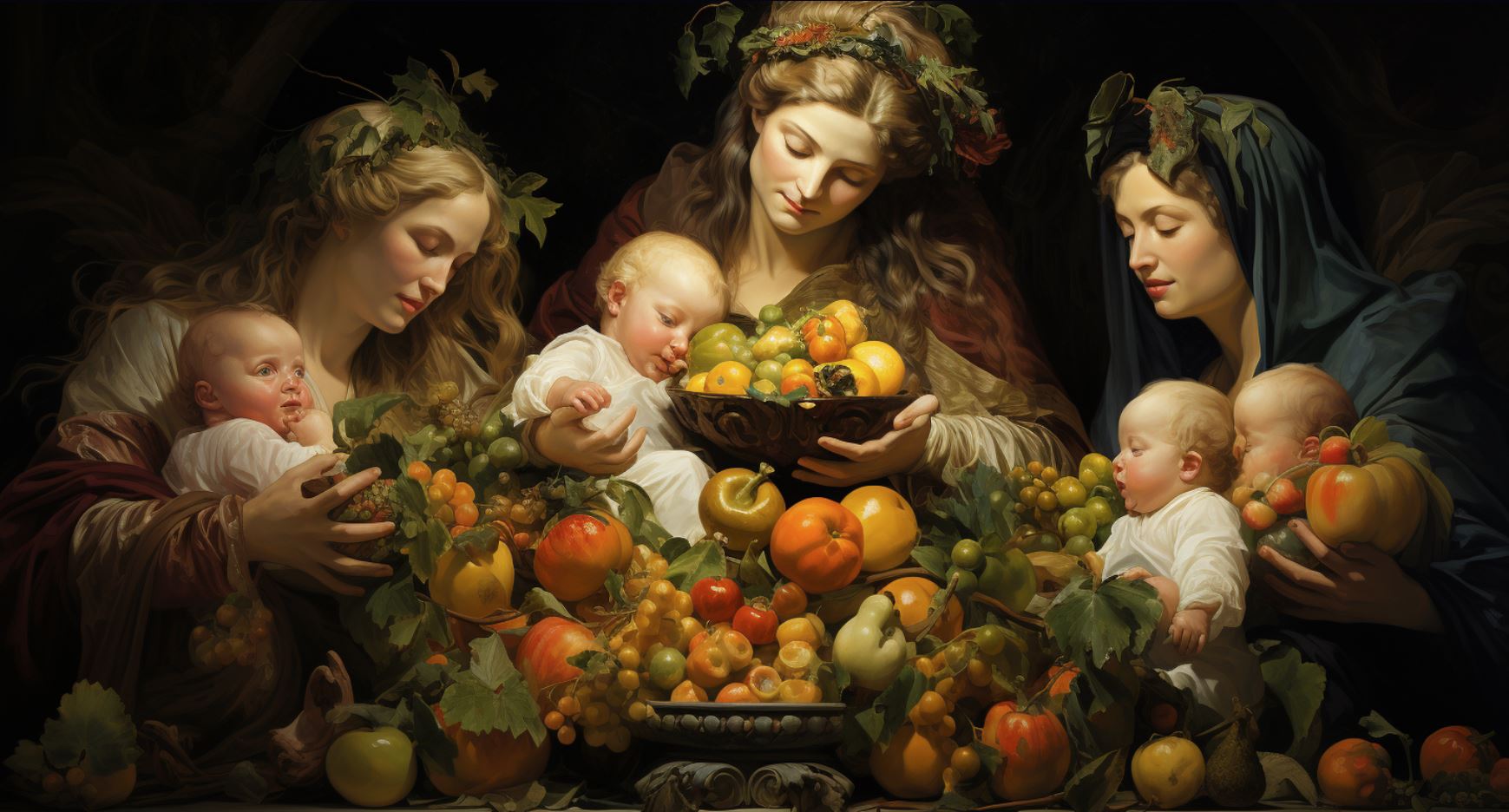
The Celtic deity known as Dea Matrona holds significant importance in Celtic mythology and culture. She is commonly associated with the River Marne, symbolizing her role as the Great Mother.
Alongside Matrona, other mother goddess figures like Modron and the Matres represent fertility and child-rearing. Ancient Gallic artworks depict these goddesses nurturing infants or holding food, highlighting their nurturing and protective qualities.
Through terracotta statues and dedications, their worship and devotion were evident in sanctuaries and sacred sites. The influence of Matrona and other mother goddesses extends to Gaulish religion and culture, leaving behind a lasting legacy.
The Mythology of Dea Matrona
Dea Matrona is a significant figure in Celtic mythology, embodying the concept of the Great Mother. This section explores the origins and significance of Dea Matrona, shedding light on her role in ancient Gallic beliefs.
Origins and Significance of Dea Matrona
The origins of Dea Matrona trace back to the ancient Celtic societies of Gaul, where she was revered as a divine mother figure. She symbolized fertility, abundance, and nurturing aspects of the natural world.
As a maternal deity, Dea Matrona held great significance in the lives of the Celtic people, representing the source of life and sustenance.
Associations with the River Marne
The River Marne held special significance in the cult of Dea Matrona. She was closely associated with this iconic river, which flowed through the ancient land of Gaul. As a maternal goddess, she was believed to have a protective and nurturing presence over the land and its inhabitants.
The connection between Dea Matrona and the River Marne highlighted her association with water, fertility, and the cycles of life.
Throughout Gaul, worshippers honored Dea Matrona through various rituals and offerings near the sacred sites and tributaries of the River Marne.
The belief in her benevolent powers shaped the cultural and religious practices of the Celtic peoples, emphasizing the importance of harmonizing with nature and acknowledging the divine feminine.
Dea Matrona’s influence extended beyond Gaul, as evidenced by the presence of rivers bearing her name or derived from it in different regions.
These geographical links further solidify her standing as a revered goddess, celebrated and worshipped across Celtic territories.
Matrona and Other Celtic Mother Goddesses
Matrona, Modron, and the Matres are prominent figures in Celtic mythology, representing the essence of motherhood and fertility. Each goddess brings her unique attributes and symbolism to the pantheon.
Matrona: The Great Mother
Matrona, also known as Dea Matrona, holds a significant position as the Great Mother in Celtic mythology. Associated with the River Marne, she is revered as a divine guardian and nurturer.
Her name, meaning “Great Mother,” reflects her role in promoting fertility and protecting the community. The ancient Gauls depict Matrona with images of her breastfeeding babies or holding food in her lap, symbolizing nourishment and abundance.
Modron: The Welsh Mother Goddess
Modron, a mythological figure in Welsh folklore, is recognized as the mother of Mabon. Often depicted as an enigmatic woman, Modron’s story intertwines with Urien of Rheged in certain versions of the myth.
Her association with motherhood represents the cycles of life, birth, and growth. While Modron’s influence extends beyond the Celtic regions, her connection to maternal themes aligns with the broader concept of Celtic mother goddesses.
Matres: Fertility and Child-Rearing Deities
The Matres, often represented as a trinity of goddesses, embody the ideals of fertility and child-rearing in Celtic culture. They are linked to protecting and nurturing children, ensuring their well-being and prosperity.
Evidence of the Matres’ presence can be found in Scotland, Germany, and even at Hadrian’s Wall in England, where dedications to these goddesses were made. These maternal deities were crucial in Celtic communities, where the well-being of children was of paramount importance.
The collective influence of Matrona, Modron, and the Matres in Celtic mythology showcases the deep reverence for motherhood, fertility, and the nurturing aspects of life. Understanding these goddesses not only provides insight into ancient beliefs and customs but also highlights the enduring significance of the mother figure in Celtic culture.
Depictions and Representations of Matrona and Mother Goddesses
In the realms of Gallic art and symbolism, the depictions of Matrona and other mother goddesses hold special significance. These ancient representations provide insight into the reverence and devotion accorded to these deities.
Let us explore the terracotta statues and evidence found in ancient Gallic art that shed light on the depictions and representations of Matrona and other mother goddesses.
Terracotta Statues and their Meaning
Terracotta statues played a vital role in the religious practices of ancient Gaul.
These humble yet expressive artworks captured the essence of Matrona and mother goddesses. The statues depicted these deities in various forms, emphasizing their nurturing and protective qualities. Most commonly, the statues portrayed the mother goddesses amply breastfeeding babies or cradling food in their laps.
The terracotta statues held great symbolic meaning for worshipers, serving as tangible representations of the divine and the connection to fertility and abundance. These mass-produced, low-cost statues adorned domestic shrines and were accessible to a wide range of people, promoting the widespread devotion to Matrona and other mother goddesses.
Evidences in Ancient Gallic Art
Ancient Gallic art provides further evidence of the veneration of Matrona and mother goddesses. Intricate carvings on stone monuments, engravings, and other artistic expressions depict the divine figures in all their glory.
The representations showcase Matrona’s association with the River Marne, often depicting her alongside the flowing water as a symbol of her guardianship.
These depictions also highlight the interconnectedness of Matrona with fertility and prosperity, often featuring symbols of abundance, such as clusters of fruits and grains.
The art serves as a testament to the deep-rooted belief in the power and benevolence of these mother goddesses among the Gaulish people.
- Carvings on stone monuments reinforce the concept of Matrona’s association with the River Marne.
- Engravings depict Matrona and other mother goddesses surrounded by symbols of fertility and abundance.
- Ancient Gallic art showcases the reverence and devotion to these deities in visual form.
In conclusion, the terracotta statues and ancient Gallic art provide a unique glimpse into the depictions and representations of Matrona and other mother goddesses.
These artistic expressions capture their nurturing and protective qualities, emphasizing their association with fertility and prosperity. The symbolism conveyed through these artworks reflects the deep reverence and widespread devotion of the Gaulish people toward these divine beings.
Worship and Devotion to Matrona and Mother Goddesses
The worship and devotion to Matrona and other mother goddesses played a significant role in Celtic culture. The reverence for these deities was manifested through various dedications and rituals.
Dedications and Rituals
Devotees expressed their devotion to Matrona and the mother goddesses through dedications and offerings. These dedications took the form of inscriptions, altars, and gifts presented at sacred sites and temples.
The inscriptions often included prayers, thanks, and requests for the blessings of fertility, protection, and abundance. These acts of devotion demonstrated the intimate connection between the worshippers and the maternal deities they revered.
Rituals were an integral part of worshiping Matrona and the mother goddesses. These rituals typically involved offerings and ceremonies at specific times of the year, such as harvest festivals and fertility rites.
The rituals aimed to honor and seek the favor of the deities, ensuring the well-being and prosperity of the community. Participants would gather at sanctuaries and other sacred sites, where priests or priestesses conducted ceremonies, often involving music, dance, and feasting.
Sanctuaries and Sacred Sites
Sanctuaries and sacred sites were essential locations for the worship of Matrona and the mother goddesses. These sites were believed to be imbued with spiritual energy and served as meeting points between the divine and mortal realms.
They provided spaces for communal worship and religious gatherings.
One notable sacred site associated with Matrona is the area along the River Marne in Ancient Gaul, where the goddess was particularly venerated. The river served as a natural boundary and connection between the earthly and divine realms, making it an ideal location for worship.
Apart from the River Marne, other sanctuaries and sacred sites dedicated to the mother goddesses have been discovered throughout Celtic territories. These sites often featured temples, shrines, and other structures devoted to the deities.
Devotees traveled from far and wide to seek blessings, guidance, and miracles from Matrona and the mother goddesses.
In conclusion, worshippers of Matrona and the mother goddesses displayed their devotion through dedications, rituals, and veneration at sanctuaries and sacred sites. These acts of worship played a crucial role in Celtic culture, fostering a deep connection between the worshippers and the divine feminine forces that symbolized fertility, nurturing, and protection.
Influence of Matrona and Mother Goddesses in Celtic Culture
The presence and significance of Matrona and other mother goddesses in Celtic culture are undeniable. These powerful deities played a vital role in Gaulish religion and left a lasting imprint on the Celtic peoples.
Let’s explore the influence of Matrona and mother goddesses in different aspects of Celtic culture.
Matrona’s Role in Gaulish Religion and Culture
Matrona, the Great Mother, held a central position in Gaulish religion. As a goddess associated with the River Marne, her divine presence was intimately connected to the life-giving force of water.
Matrona was revered as a protector and nurturer, embodying the ideals of maternity and fertility. The Gauls offered dedications and performed rituals to honor her, seeking her blessings for abundance and prosperity.
Matrona’s influence extended beyond religious practices. She was also a symbol of cultural identity and unity among the Celtic tribes. Stories and myths centered around her highlighted the shared cultural heritage of the Gaulish people.
Matrona’s presence fostered a sense of belonging and provided a source of strength for the community.
Legacy and Contemporary Interpretations
The legacy of Matrona and mother goddesses continues to shape Celtic culture in the modern world. Their imagery and symbolism are still present in various forms, serving as a source of inspiration for artists, writers, and spiritual seekers.
Contemporary interpretations of Matrona and mother goddesses emphasize their relevance in today’s society. Their embodiment of femininity, nurturance, and empowerment resonates with individuals seeking connection to their ancestral roots and reclaiming the wisdom of the divine feminine.
Matrona and other mother goddesses serve as symbols of strength, compassion, and the innate creative power within each person.
Key Takeaways:
- Matrona and mother goddesses played a vital role in Gaulish religion, revered as protectors and nurturers.
- Matrona’s influence extended to cultural identity, uniting the Celtic tribes and fostering a sense of community.
- The legacy of Matrona and mother goddesses continues to inspire contemporary interpretations, empowering individuals and celebrating the divine feminine.
.

